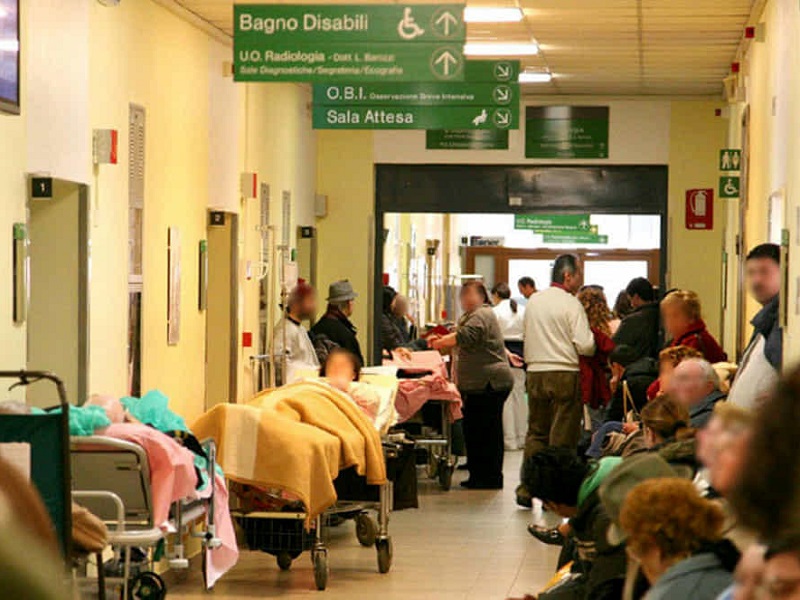For the President of the Order of Nursing Professions, Pierpaolo Volpe, the Emergency Hospitals and First Aid requires a change in the organizational models.
In our Region, the organization of hospitals was stuck in the 1930s and 1940s on an organizational model based on “tasks” according to the Teyloristic system no longer in use even in the car companies from which it originated.
The model for “tasks”, called “functional” is out of time as it does not guarantee adequate assistance and, among other things, is in contrast with the inspiring principles of the health reform that saw “the person assisted”.
Today we are paying for the inadequate and short-sighted political choices of the last 30 years, where the assets of the NHS, now totally depleted by a constant definition of funding started in 2008, have been dispersed.
There has been so much inattention to the “health system” that the main health planning and programming tool, the National Health Plan, which by law must be renewed every three years, is fixed at that of 1998-2000.
To explain what is happening, the President says Pierpaolo Volpe, it is necessary to provide some data, certainly of strong impact, but they represent the “photograph” of Italian and European healthcare.
An in-depth study on health spending sees Italy always in the queue in Europe, with health expenditure (public and private) per capita which, with purchasing power parity, stands in 2019 at € 2,473 (compared to an average OECD of 2,572 euros) with a dizzying gap compared to some reference countries such as France and Germany which, respectively, mark per capita health expenditure values of 3,644 euros and 4,504 euros.
The latest data published by the Ministry of Health report a further decrease in beds from 2017 to today, both in terms of “acute” and “post acute” (long-term care and rehabilitation), in clear violation of the law, which requires (Ministerial Decree 70/2015) a level not exceeding 3.7 beds (pl) per thousand inhabitants, including 0.7 beds per thousand inhabitants for rehabilitation and post-acute long-term care.
The data in Puglia do not leave us calm. In 2017 in our Region the number of beds per thousand inhabitants was at the nurses limit as it was 3.1 beds (2.76 for acute cases + 0.31 post-acute). Today the situation has not improved at all.
The data to be analyzed and which must make us reflect, says President Volpe, is that relating to personnel and the “welfare deficit” in our country compared to other OECD countries.
Italy is the European country with the highest number of Doctors and the one with the lowest number of Nurses.
In 2010 in Italy the Nurses / Doctors ratio was worrying as it was at the lower limit of the European average (equal to 1.0 nurses per doctor) compared to 4.4 Nurses per Doctor in Denmark and over 3 Nurses per Doctor in Germany.
Germany, known for the efficiency of the NHS, in 2010 had a number of Doctors (305,093) slightly lower than that of Italy (371,450), but on the other hand it had almost triple the number of Nurses, equal to 922,000 unity compared to our country (381,070 active nurses).
Today, however, nurses have increased in the OECD, but not in Italy where they are still 5.7 per 1000 inhabitants against an average of 8.2, with all the Northern European states over 10 nurses per 1000 inhabitants and only some Eastern Europe (Slovakia, Cyprus, Poland, Latvia, Bulgaria, Greece, Serbia, Montenegro, Macedonia and Turkey), below.
The OECD in its Health at a Glance Europe 2020 report, presented on November 19, 2020, clearly states that “nurses play a fundamental role in providing care in hospitals and long-term care institutions under normal circumstances, and their role it was even more critical during the COVID-19 pandemic ”.
The only solution to solve the “welfare deficit” of our country is to start planning immediately, without wasting any more time, an “epochal” reform of health care, says President Pierpaolo Volpe.
Immediately increasing the number of places in the Nursing Degree course and laying the foundations for a change in organizational models are the cure for the disease that is gripping the Italian and Apulian healthcare.
1. As regards first aid, the “See and Treat” model, in use in Tuscany, could be applied, which represents a model of assistance response to minor emergencies, defined as “mild cases whose health problem could be solved directly to the reception, avoiding various steps and procedures “.
2. As far as hospital care is concerned, the functional model (by tasks) should be abandoned and Primary Nursing applied, already in use in many Italian realities and tested in 2010 at the European Oncological Institute in Milan.
3. “Proximity” assistance, the backbone of the new PNRR, should finally clear the Case Management model, where the “case manager” Nurse will take care of the “global” care of the patient.
4. For the management of chronic conditions, the Apulian and Taranto health care cannot ignore the application of the Chronic Care Model, a care model that no longer leads the patient to the hospital, but it is the health system that goes towards the citizen through a branch services in the area, the use of structures such as community hospitals, community homes, the guarantee of greater provision of services by health districts, with the strong presence of general practitioners and the introduction of such as the family and community nurse and the case manager.
President Volpe “hopes for a real awareness on the part of regional and local political decision-makers. It is no longer a time of waiting, the health of the citizens and the future of our territory are at stake. ”.
